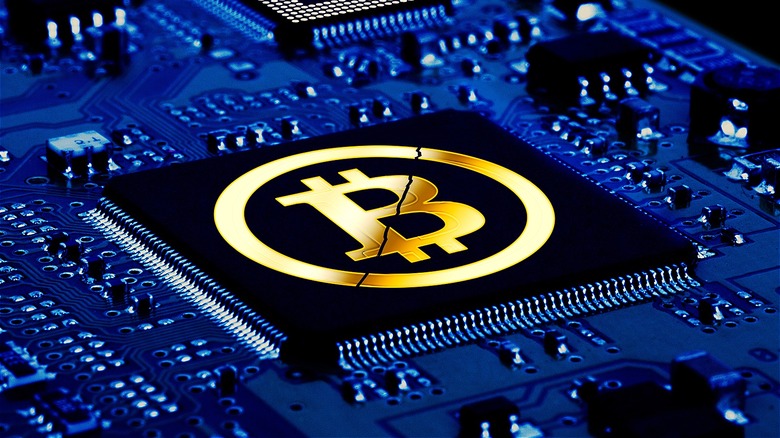Bitcoin Halving: What It Is And How It Works
As an investor, you might find the term "bitcoin halving" to be somewhat intimidating, and, well, frankly, scary. Fortunately, the halving has nothing to do with the value of bitcoin that's held as an investment. Instead, bitcoin halving refers to a periodic 50% decrease in the award that bitcoin miners receive for being the first to solve a cryptographic (or mathematical) puzzle. At the risk of oversimplifying, the mining process is how new bitcoins are created.
Historically, halving the reward for bitcoin miners has occurred every four years. At the time of writing, the most recent halving took place in April 2024. Currently, miners receive 3.125 bitcoins for each new puzzle solved and subsequent block that's created and added to the blockchain.
Since, currently, one puzzle is solved approximately every 10 minutes, that means 3.125 bitcoins enter into circulation every 10 minutes. That's down from 6.25 bitcoins rewarded for puzzles solved in the period between May 2020 and April 2024. Since halving — or "halvening" in bitcoin-speak — actually reduces the incentive for bitcoin miners to solve additional puzzles to create new blocks, what is its purpose?
Bitcoin halving maintains scarcity
The first reason for bitcoin halving is to prevent bitcoin inflation. That is, halving maintains the scarcity of the coins and prevents miners from overproducing bitcoins, thereby lowering their value. Although bitcoin has morphed into a popular investment, its original purpose is to serve as a method of payment without requiring a third-party or regulatory oversight. Hence, the creators built in the halving mechanism to temper the supply of bitcoin and maintain its purchasing power.
For that reason, bitcoin is sometimes considered a hedge against inflation, in the same way that investing in precious metals like gold is also considered an inflation hedge. Consider that there's a limited supply of both bitcoin and gold. That's unlike fiat money like the U.S. dollar that can be created in unlimited quantities. (Speaking of which, will digital currency ever replace physical cash?)
As well, halvening events attract increased attention from the financial media, which is always a plus. Investors who might not have bitcoin, or cryptocurrencies in general, on their radar will now be made aware of the scarcity and potential gains that frequently follow bitcoin halving. That's because reducing the future number of anything popular often increases demand and bitcoin is no different. Every prior halving event has typically been followed by an increase in value for the flagship coin. Therefore, halvening is a great benefit to investors and speculators, though not so much to mining operations, which we'll discuss next.
Bitcoin miners will get less motivated to add blocks
Let's face it, individuals and businesses involved in bitcoin mining are motivated by profit. Miners spend a tremendous amount of money on the necessary equipment and energy to mine bitcoin, so it's not exactly great news when the reward for their effort is cut in half. To remain competitive after a halvening event, large mining operations will attempt to increase their market share to make up for the lower margins. Unfortunately, that puts smaller and less well-capitalized mining operations at a competitive disadvantage.
Did you know there's a finite number of bitcoins to be mined? Bitcoin is capped at 21 million total. Current estimates indicate that maximum will be reached in approximately the year 2140. Until then, rewards to successful miners in the form of coins will continue to halve every four years. Eventually, these puzzle-solving incentives will become low enough that miners will rely on fees earned from validating blocks for a majority of their income instead of creating new blocks.
This future disincentive to mine new coins is illustrated by the fact that approximately 19 million coins have been mined to date. A time frame of the year 2140 to reach the 21 million bitcoin limit means the remaining 2 million coins will take 116 years to create, which means 29 more bitcoin halvings.


